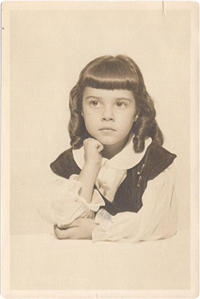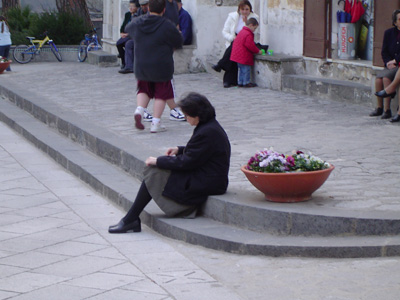 My passion for drawing began around the kitchen table where Mom sat us down for quiet drawing time. Using the ink-washed renderings of models in newspaper ads, she would make simple contour drawings for us. The idea of capturing these gestural figures on paper was intriguing to me.
My passion for drawing began around the kitchen table where Mom sat us down for quiet drawing time. Using the ink-washed renderings of models in newspaper ads, she would make simple contour drawings for us. The idea of capturing these gestural figures on paper was intriguing to me.
Turning five in February, I was very ready to attend kindergarten. However, I would not be able to enroll until the following fall, so the local elementary school agreed to take me for the last few months of the school year. On my first day I confidently painted three pictures at the easel. The teacher was so impressed that she took me and my paintings to the principal’s office. With much praise, he immediately hung them up on his wall! I remember a wonderful feeling of satisfaction wash over me, thinking, “I like being an artist.”
As a child, drawing became an instinctive impulse to express myself. Even on long Sunday afternoons sitting in our grandparents’ parlor, I would observe and draw people on a small, white pad. In school I was thrilled to be chosen to do special projects, which encouraged my interest in art even more.
High school art electives not only provided a good background in the elements of design, but also included graphic arts, calligraphy and poster design. In college I began to enjoy the process of drawing. There I took figure drawing and printmaking (lithography) classes with a teacher who inspired us to develop a very gestural style. Jim Mullen would say, “Draw what you see, not what you know.” With emphasis on interpretation and feeling, I learned to capture the spontaneity and immediacy of the pose, and really explore line.
A little art history: In western art, drawing had been primarily considered a step in the creative process for painting. In the 18th century this changed: collectors began recognizing drawing as a medium in its own right and drawings were being exhibited alongside paintings in the French salons. Then during the 19th century, there was a movement of the artistic avant-garde to free line from its more academic treatment, creating a variety of innovative drawing styles.
An important source of inspiration for me came from teaching young children. While home with my own children, Danielle and Nick, I couldn’t wait to teach them to draw the way I learned in college: we began while they were still in their high chairs. As preschoolers they were uninhibited. By kindergarten — very observant and imaginative little artists. Encouraged, I decided to integrate drawing into all subject areas when I went back to teaching.
My elementary school students used self-expression to demonstrate knowledge of core subjects while using creative and critical thinking. This was especially evident while teaching 6th grade ancient history. I was thrilled to be teaching students about the Renaissance. For me it was a period of renewed interest in Leonardo, so much so, that in 2005 I was inspired to establish an award — a portfolio of drawing materials — to be given at my school’s 6th Grade Awards Assembly every June. The da Vinci Kids Award recognizes two students each year who demonstrate excellence in drawing ability and who share my passion for this medium.
 Every summer at the Torpedo Factory in Alexandria, Virginia, I took figure drawing classes, including gesture, portrait and classical realism. While knowledge of anatomy informs my work, my style is still very gestural. Upon retiring in 2008, I decided that it was time to revisit color, so I began studying watercolors and pastels. Interestingly, I discovered that painting a pastel of a lumpy pear isn’t much different than drawing a curvy model. And capturing the gesture of a flower with water colors is much like drawing a figure. Taking classes at the Torpedo Factory, I was fortunate to have outstanding artists as teachers: Jacqueline Saunders, Robert Liberace, Nancy Freeman, Lisa Semerad.
Every summer at the Torpedo Factory in Alexandria, Virginia, I took figure drawing classes, including gesture, portrait and classical realism. While knowledge of anatomy informs my work, my style is still very gestural. Upon retiring in 2008, I decided that it was time to revisit color, so I began studying watercolors and pastels. Interestingly, I discovered that painting a pastel of a lumpy pear isn’t much different than drawing a curvy model. And capturing the gesture of a flower with water colors is much like drawing a figure. Taking classes at the Torpedo Factory, I was fortunate to have outstanding artists as teachers: Jacqueline Saunders, Robert Liberace, Nancy Freeman, Lisa Semerad.
Art is storytelling. It involves a conversation between artist and viewer as each reacts, reflects and interprets the subject. It’s amazing that something that began thousands of years ago as the earliest form of communication is still an important form of our dialogue today.
Awareness+Discovery+Stimulation+Excitement+Creativity+Expression=Satisfaction
